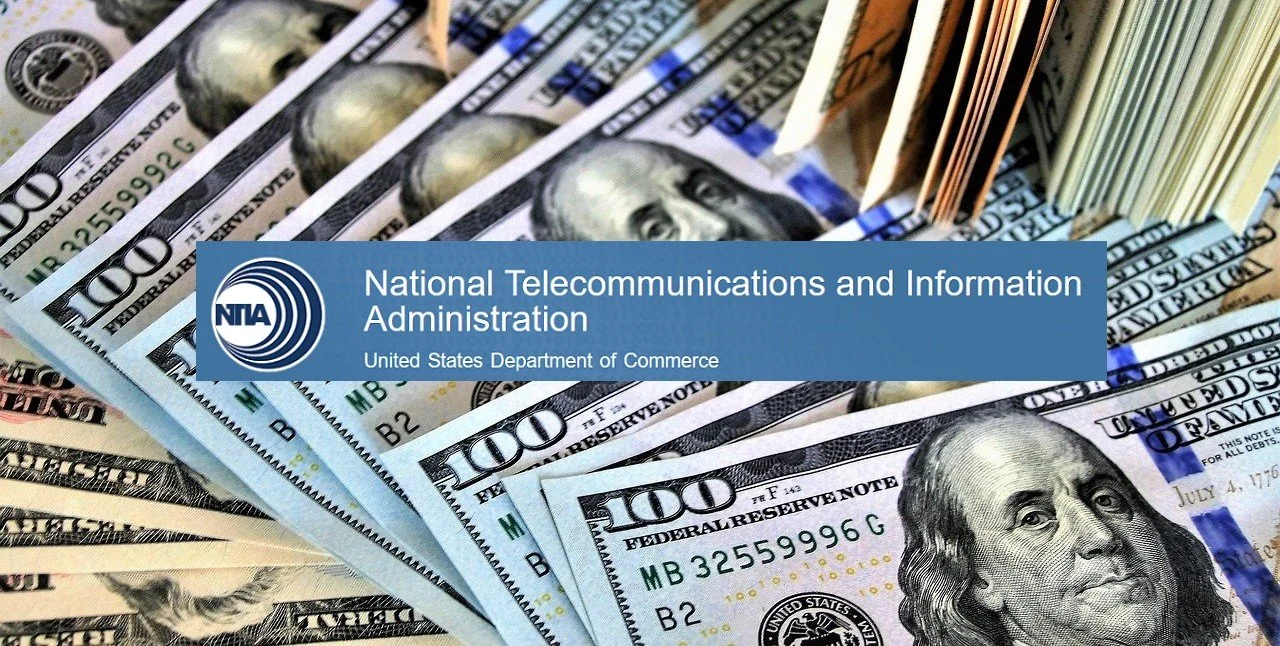Treasury Department Publishes Rules For Using Coronavirus Fiscal Recovery Funds For Broadband Infrastructure
May 17, 2021 – The U.S. Department of The Treasury has published an interim final rule for the Coronavirus State Fiscal Recovery Fund and the Coronavirus Local Fiscal Recovery Fund.[1] The interim final rule explains how Treasury expects to implement the Funds, as well as the requirements for using the money. There are four eligible use categories, one of which includes broadband infrastructure.
The Treasury Department is seeking comment on the interim final rule in general, and in response to 38 questions in particular. Comments must be received by Treasury on or before July 16, 2021.
The American Rescue Plan Act of 2021 (ARPA) provides $350 billion dollars in emergency funding for state, local, territorial, and Tribal governments to support their response to the impacts of the COVID–19 pandemic.[2] The money will be distributed through the Coronavirus State Fiscal Recovery Fund and the Coronavirus Local Fiscal Recovery Fund.[3] The Coronavirus State Fiscal Recovery Fund establishes a fund for States, territories, and Tribal governments, while the Coronavirus Local Fiscal Recovery Fund establishes a fund for metropolitan cities, nonentitlement units of local government, and counties.
Under both of these programs, funding may be spent in four eligible use categories, as specified in the ARPA and the interim final rule:
(a) To respond to the public health emergency or its negative economic impacts, including assistance to households, small businesses, and nonprofits, or aid to impacted industries such as tourism, travel, and hospitality;
(b) To respond to workers performing essential work during the COVID–19 public health emergency by providing premium pay to eligible workers;
(c) For the provision of government services to the extent of the reduction in revenue due to the COVID–19 public health emergency relative to revenues collected in the most recent full fiscal year prior to the emergency; and
(d) To make necessary investments in water, sewer, or broadband infrastructure.[4]
Investments In Broadband Infrastructure – Coronavirus State and Local Fiscal Recovery Funds
Under both the Coronavirus State Fiscal Recovery Fund and the Coronavirus Local Fiscal Recovery Fund, ARPA money may be used to “make necessary investments in water, sewer, or broadband infrastructure.” Generally, here is how the interim final rule spells out the requirements for using funding for broadband infrastructure:
Cover Unserved & Underserved Areas: The interim final rule provides that eligible investments in broadband are those that are designed to provide services meeting adequate speeds and are provided to unserved and underserved households and businesses.[5] The interim final rule provides award recipients with flexibility to identify the specific locations within their communities to be served and to otherwise design the project.[6]
Provide 100/100 Mbps Service: Under the interim final rule, eligible projects are expected to be designed to deliver, upon project completion, service that reliably meets or exceeds symmetrical upload and download speeds of 100 Mbps.[7] There may be instances in which it would not be practicable for a project to deliver such service speeds because of the geography, topography, or excessive costs associated with such a project. In these instances, the affected project would be expected to be designed to deliver, upon project completion, service that reliably meets or exceeds 100 Mbps download and between at least 20 Mbps and 100 Mbps upload speeds and be scalable to a minimum of 100 Mbps symmetrical for download and upload speeds.[8]
Prioritize Fiber: Recipients are also encouraged to prioritize investments in fiber optic infrastructure where feasible, as such advanced technology enables the next generation of application solutions for all communities.[9]
Unserved & Underserved Lack Wireline Connection With 25/3 Mbps: Under the interim final rule, eligible projects are expected to focus on locations that are unserved or underserved. The interim final rule treats users as being unserved or underserved if they lack access to a wireline connection capable of reliably delivering at least minimum speeds of 25 Mbps download and 3 Mbps upload as households and businesses lacking this level of access are generally not viewed as being able to originate and receive high-quality voice, data, graphics, and video telecommunications.[10]
Avoid Overbuilding: In selecting an area to be served by a project, recipients are encouraged to avoid investing in locations that have existing agreements to build reliable wireline service with minimum speeds of 100 Mbps download and 20 Mbps upload by December 31, 2024, in order to avoid duplication of efforts and resources.[11]
Integrate Affordability Options: Recipients are also encouraged to consider ways to integrate affordability options into their program design.[12]
Prioritize Last-Mile Connections: To meet the immediate needs of unserved and underserved households and businesses, recipients are encouraged to focus on projects that deliver a physical broadband connection by prioritizing projects that achieve last-mile connections.[13]
Prioritize Locally-Owned: Treasury also encourages recipients to prioritize support for broadband networks owned, operated by, or affiliated with local governments, non-profits, and co-operatives – providers with less pressure to turn profits and with a commitment to serving entire communities.[14]
Digital Literacy: Under ARPA, assistance to households facing negative economic impacts due to COVID–19 is also an eligible use, including internet access or digital literacy assistance.[15]
Interim Final Rule Questions – Broadband
The Treasury Department is seeking comment on the interim final rule in general, and in response to 38 questions in particular. Below are the questions that specifically address broadband.
Question 22: What are the advantages and disadvantages of setting minimum symmetrical download and upload speeds of 100 Mbps? What other minimum standards would be appropriate and why?
Question 23: Would setting such a minimum be impractical for particular types of projects? If so, where and on what basis should those projects be identified? How could such a standard be set while also taking into account the practicality of using this standard in particular types of projects? In addition to topography, geography, and financial factors, what other constraints, if any, are relevant to considering whether an investment is impracticable?
Question 24: What are the advantages and disadvantages of setting a minimum level of service at 100 Mbps download and 20 Mbps upload in projects where it is impracticable to set minimum symmetrical download and upload speeds of 100 Mbps? What are the advantages and disadvantages of setting a scalability requirement in these cases? What other minimum standards would be appropriate and why?
Question 25: What are the advantages and disadvantages of focusing these investments on those without access to a wireline connection that reliably delivers 25 Mbps download by 3 Mbps upload? Would another threshold be appropriate and why?
Question 26: What are the advantages and disadvantages of setting any particular threshold for identifying unserved or underserved areas, minimum speed standards or scalability minimum? Are there other standards that should be set (e.g., latency)? If so, why and how? How can such threshold, standards, or minimum be set in a way that balances the public’s interest in making sure that reliable broadband services meeting the daily needs of all Americans are available throughout the country with the providing recipients flexibility to meet the varied needs of their communities?
**********
[1] Department Of The Treasury, Coronavirus State and Local Fiscal Recovery Funds, Interim final rule, 86 Fed. Reg. 26,786 (May 17, 2021), https://www.govinfo.gov/content/pkg/FR-2021-05-17/pdf/2021-10283.pdf; see also U.S. Department of The Treasury, https://home.treasury.gov/, Coronavirus State and Local Fiscal Recovery Funds, https://home.treasury.gov/policy-issues/coronavirus/assistance-for-state-local-and-tribal-governments/state-and-local-fiscal-recovery-funds.
[2] American Rescue Plan Act of 2021, Public Law 117–2, https://www.congress.gov/bill/117th-congress/house-bill/1319/text.
[3] ARPA Section 9901. Section 9901 amends Title VI of the Social Security Act (42 U.S.C. § 801 et seq.) by adding Section 602, Coronavirus State Fiscal Recovery Fund, and Section 603, Coronavirus Local Fiscal Recovery Fund.
[4] 86 Fed. Reg. 26,787 (May 17, 2021).
[5] 86 Fed. Reg. 26,804 (May 17, 2021).
[6] Id.
[7] Id.
[8] Id. “In setting these standards, Treasury identified speeds necessary to ensure that broadband infrastructure is sufficient to enable users to generally meet household needs, including the ability to support the simultaneous use of work, education, and health applications, and also sufficiently robust to meet increasing household demands for bandwidth. Treasury also recognizes that different communities and their members may have a broad range of internet needs and that those needs may change over time.” Id.
[9] 86 Fed. Reg. 26,805 (May 17, 2021).
[10] Id.
[11] 86 Fed. Reg. 26,806 (May 17, 2021).
[12] Id.
[13] Id.
[14] Id.
[15] Id.





